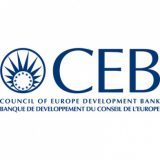“PARADISE LOST”
website: www.romapavilion.org
“PARADISE LOST”
website: www.romapavilion.org
A press conference on June 7, 2007 from 3:15 – 3:45 p.m. at the Teatro Piccolo Arsenale in Calle della Tana 2168/B, Venice, will launch the first Roma Pavilion at the 52nd Venice Biennale. Hungarian curator, Tímea Junghaus will introduce the concept of the Pavilion, along with Russian/Italian art historian and critic Viktor Misiano, who served on the Scientific Board of the Pavilion. British artist Daniel Baker will also speak at the event, which will be accompanied by a multi-media presentation of contemporary Roma artworks.
(Newsletter:
1.st Issue :
http://www.romapavilion.org/news/arch01.htm
2. Issue:
http://www.romapavilion.org/news/arch02.htm
3.Issue :
http://www.romapavilion.org/index.html
The first Roma Pavilion will open at 4:30 p.m. with the premiere of “Paradise Lost,” an exhibition featuring the work of sixteen contemporary Roma artists representing eight European countries. The Pavilion is located on the piano nobile of the 16th-century Palazzo Pisani Santa Marina, Calle delle Erbe, in the Canareggio district.
The exhibiting artists include:
Daniel BAKER (GB); Tibor BALOGH (H); Mihaela Ionela CIMPEANU (ROM); Gabi JIMENEZ (F); András KÁLLAI (H-GB); Damian LE BAS (GB); Delaine LE BAS (GB); Kiba LUMBERG (FIN); OMARA [ Mara OLÁH] (H); Marian PETRE (ROM); Nihad Nino PU©IJA (BIH-D); Jenõ André RAATZSCH (H-D); János RÉVÉSZ (H); Dusan RISTIC (SER-USA); István SZENTANDRÁSSY (H); Norbert SZIRMAI (H).
Curator:
Tímea JUNGHAUS, (Hungary), art historian, curator, Roma Cultural Participation Project, Arts and Culture Network Program, Open Society Institute–Budapest.
The Pavilion was commissioned by the Open Society Institute, and is co-sponsored by the Allianz Kulturstiftung (Germany) and the European Cultural Foundation (the Netherlands).
According to Junghaus’ essay in the catalog that accompanies the exhibition, ‘I consider it far less important to use a politically correct term [“Roma”] than to clean the word “Gypsy” of prejudices and negative stereotypes, and to rehabilitate it by employing it in positive contexts.’
Music at the opening will be provided by the Shukar Collective. According to The Times of London, ‘the Romanian group fuse a variety of contemporary urban influences such as hip-hop, drum ‘n’ base and dub with the bass, spoons, cimbaloms and violins associated with previous generations of gypsy village bands…[T]he guttural style long favoured by gypsy singers was tailor-made for hip-hop.’
At 6:00 p.m., following the grand opening festivities, there will be a panel discussion that will address some of the fundamental questions and controversy inherent in this first Roma Pavilion created across national boundaries: Is a separate Roma Pavilion necessary? Is there such a thing as “Roma art”? Does creating a separate space for Roma artists help or hinder social inclusion?
The panel will be moderated by BBC Budapest correspondent Nick Thorpe, who will interview the representatives of the sponsoring organizations, including philanthropist George Soros, Chairman of the Open Society Institute; Michael Thoss, Director of the Allianz Kulturstiftung; and Odile Chenal, Deputy Director of the European Cultural Foundation.
Other panelists will include Tímea Junghaus, curator; László Jakab Orsós, Director of the Hungarian Cultural Institute in New York; Beral Madra, Director of the BM Contemporary Art Center in Istanbul; and award-winning Romanian Gypsy musician, Damian Draghici.
Following the round-table discussion at 7:00 p.m., internationally renowned jazz guitarist Ferenc Snétberger will perform, prior to the reception. According to Akustik Gitarre, ‘Hardly any other master of the nylon string guitar combines such brilliant classical technique, interweaving South and North American influences with his Gypsy heritage, creating a global musical idiom.’
The first Roma Pavilion marks the arrival of Roma contemporary culture on the international stage and sends an important message: Roma have a vital role to play in the cultural and political landscape of Europe.
The Roma Pavilion will be open to the public from 10 June – 21 November, 10:00a.m.-6:00p.m. Closed Mondays.
The artists will be available for interviews in Venice June 5 – 6.
Please contact – Linda Vadász, Éva Hajdú, Judith Vince – for an appointment and for further information at:
E-mail: press.romapavilion@osi.hu
Telephone: +36.30.200-6031
Website: www.romapavilion.org
Newsletter of the Roma Pavilion: http://www.romapavilion.org/news/arch01.htm

















